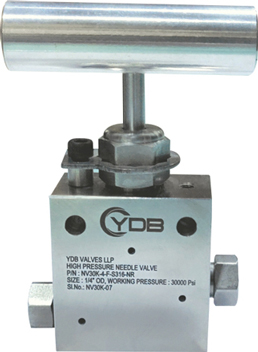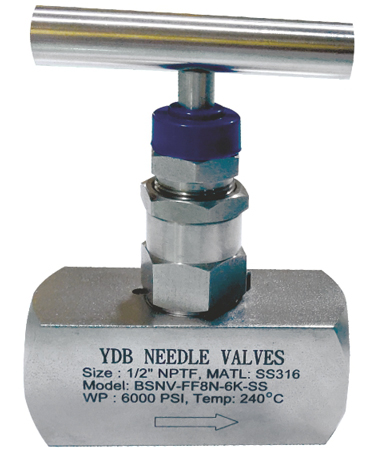What are some common application for forged steel ball valves?
25th January 2021
Benefits of a High-Pressure Needle Valve
9th March 2021Can you install a needle valve in a reverse direction?
The answer to this question might be a No. Usually, the reason might be in the closed position the higher pressure fluid is on the top of the disc and this has the high-pressure fluid which is in opposition of the packing. This will cause a quick leak of the liquid when installed in the conventional pattern. You can find a class of needle valves that are used as a floor or speed control in hydraulic power systems while these valves contain a check valve that passes the needle. This is the way there is a restricted flow in a single direction and unrestricted flow in another direction.
However, depending on the pressure-flow fluid and other types of quality and fabrication the reverse flow might be ok if it is allowed by the needle valves manufacturers. But in some types of standard needle valves, there might be something not given by the needle valve supplier about the reverse flow of the needle.

The working of the needle valve
Usually, needle valves close and open an orifice with the help of a tapered, and that it lowers and raises with the handles spin. Usually, the handle is connected to the plunger which is known as a stem and when you turn the handle the plunger will move down and up depending upon the threads. Since the plunger is moving down the tapered pointed end will come into contact with the valve seat to fully see the orifice and often the valve seat is tapered.
You can see several options as well as sizes with which you can connect to a pipe or via the port connection on the output and input. Finally, the unit is connected to the wall housing that can be easily made out of different materials like stainless steel or brass.
Types of needle valves
The most common type of needle valve is the manually operated threaded needle valve. But addition to needle valves include motorized needle valve and angle needle valve.
The motorized needle valve does not include a handle for manual operation but it can make use of an electric or pneumatic actuator that connects and turns the plunger. However, the operations are remotely controlled and are continuously following a loop system to accurately control the flow rate.
In the case of an angle needle valve, these needle valves usually turn the output from the inlet by a right angle instead of a horizontal line. Hence the equivalent operation concept applied by a 90-degree angle allowing better system integration. However, such information is displayed by the needle valves manufacturers in a precise manner.
Selection Criteria
While selecting a needle valve you should take care of different requirements that need to be taken into account and this includes size, pressure, material, and temperature. The most common valve materials are stainless steel and brass going to the wide range of chemical resistance as there are some additional materials available for specific applications.
Additionally, you should also look for the temperature measurement. Usually, needle valves are suitable for all low and high-temperature applications. You also need to understand the pressure requirements in your system while selecting the correct needle valve.
